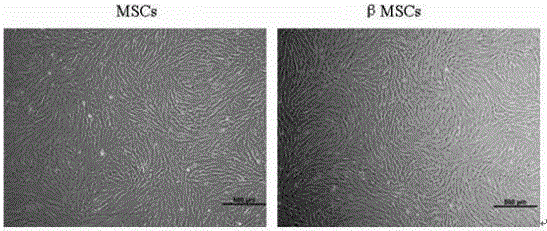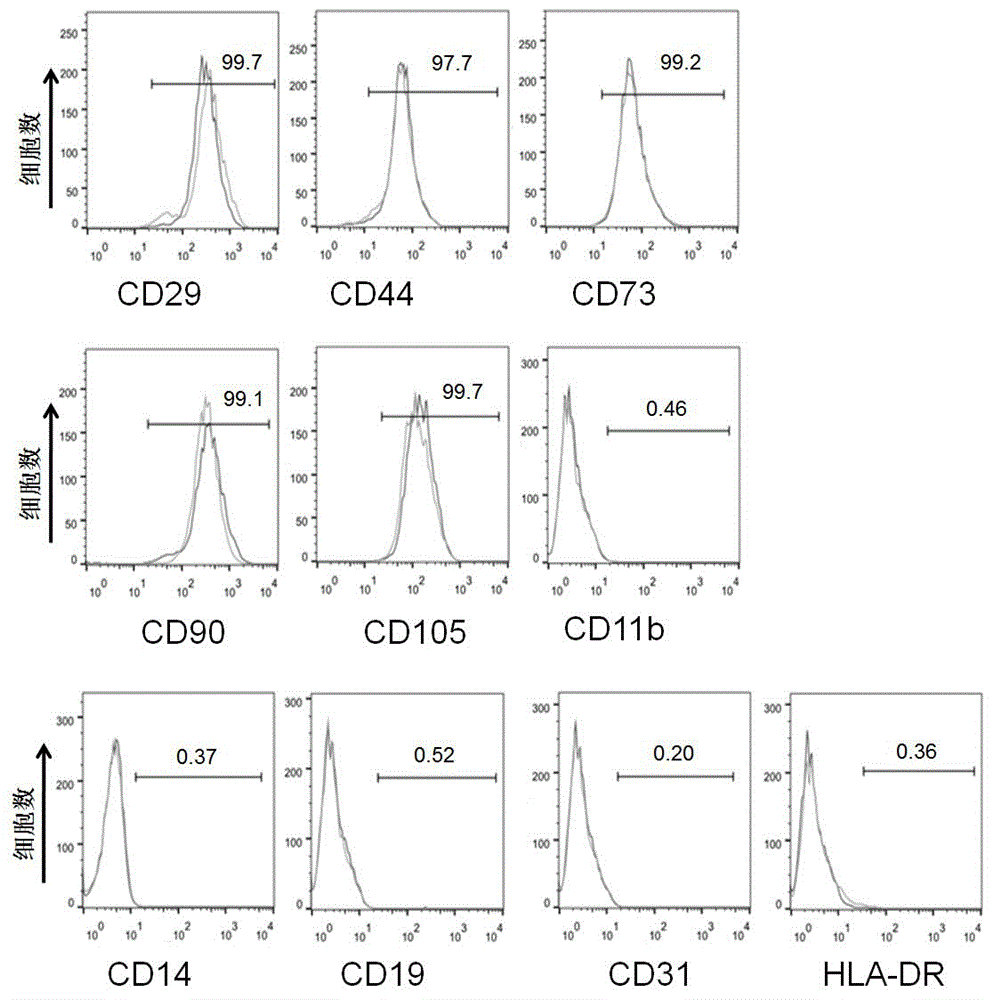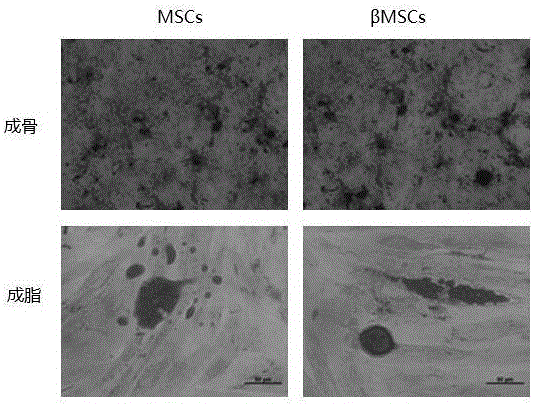Exosome, preparing method of exosome and application of exosome in preparing medicine or preparation for treating sepsis
A technology of exosomes and MSCs, applied to the exosomes produced by mesenchymal stem cells, the application field in the treatment of sepsis, can solve the problems of limited survival, malignant transformation, heterogeneous MSCs, etc., to strengthen the bacteria in the body. Clearance rate, enhanced immunosuppressive function, and strong immunosuppressive function
- Summary
- Abstract
- Description
- Claims
- Application Information
AI Technical Summary
Problems solved by technology
Method used
Image
Examples
Embodiment 1
[0033] Example 1 Optimizing Umbilical Cord Mesenchymal Stem Cells with IL-1β
[0034]1. Isolation and culture of human umbilical cord mesenchymal stem cells (MSCs) (the reagents and consumables used in the laboratory are all sterile)
[0035] With the informed consent of the puerpera, the umbilical cords of cesarean section fetuses with normal full-term pregnancy were collected. Before the umbilical cord is collected, the puerpera needs to undergo strict pathogen testing, including Treponema pallidum, HIV, cytomegalovirus, hepatitis B virus, hepatitis C virus, syphilis and mycoplasma, and use it after confirming safety.
[0036] Cut the umbilical cord near the placenta to 20-30 cm, store it in pre-cooled sterile phosphate buffered saline (PBS) at 4°C, and use it within 4 hours. In the ultra-clean workbench, the umbilical cord was cut into small sections of about 5 cm, and the residual blood on the surface of the umbilical cord was washed with PBS; DMEM / F12 medium (purchased ...
Embodiment 2
[0049] Example 2 Extraction and identification of IL-1β-optimized mesenchymal stem cell exosomes (βMSC-exo) and resting state mesenchymal stem cell exosomes (MSC-exo)
[0050] 1. Extraction of βMSC-exo and MSC-exo
[0051] Cell culture supernatants of βMSCs and resting MSCs were collected respectively in 500ml sterile centrifuge bottles or 50ml polypropylene centrifuge tubes (purchased from Beckman), and centrifuged at 4°C and 2000g for 10 minutes to remove dead cells and large debris. Carefully transfer the supernatant to a new sterile centrifuge tube and centrifuge at 10,000g for 30 minutes at 4°C to remove organelles and small particles. Carefully transfer the supernatant to a sterile ultracentrifuge tube, and centrifuge at 110,000g (Beckman ultracentrifuge) at 4°C for 70 minutes, discard the supernatant carefully, wash once with normal saline for injection, and store at 4°C, 110,000g ultracentrifugation for 70 minutes, the obtained pellet is exosomes. Depending on the vo...
Embodiment 3
[0057] Example 3 Inhibitory effect of IL-1β-optimized mesenchymal stem cell exosomes (βMSC-exo) and resting state mesenchymal stem cell exosomes (MSC-exo) on T cells and macrophages cultured in vitro
[0058] 1. Inhibitory effect on T cells
[0059] The methods for obtaining and processing mouse spleen T cells are the same as in Example 1. βMSC-exo and MSC-exo were added to T cells respectively, and the final concentration of exosomes was 10 μg / ml. At the same time, 5 μg / ml ConA was added to stimulate for 48 hours, and the intracellular protein transport inhibitor BFA was added 4 hours before the cells were collected, and T cells were collected, and the protein levels of IFN-γ in T cells and CD69 on the cell surface were detected by flow cytometry. The result is as Figure 7 As shown, βMSC-exo inhibited the protein levels of IFN-γ and CD69 more effectively than MSC-exo.
[0060] 2. Inhibitory effect on macrophages
[0061] The methods for obtaining and processing mouse bone ...
PUM
| Property | Measurement | Unit |
|---|---|---|
| The average diameter | aaaaa | aaaaa |
Abstract
Description
Claims
Application Information
 Login to View More
Login to View More - R&D
- Intellectual Property
- Life Sciences
- Materials
- Tech Scout
- Unparalleled Data Quality
- Higher Quality Content
- 60% Fewer Hallucinations
Browse by: Latest US Patents, China's latest patents, Technical Efficacy Thesaurus, Application Domain, Technology Topic, Popular Technical Reports.
© 2025 PatSnap. All rights reserved.Legal|Privacy policy|Modern Slavery Act Transparency Statement|Sitemap|About US| Contact US: help@patsnap.com



